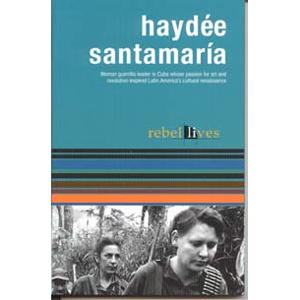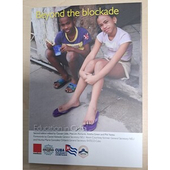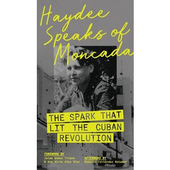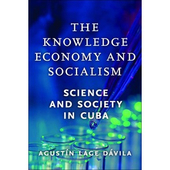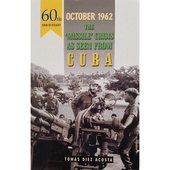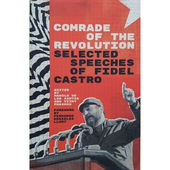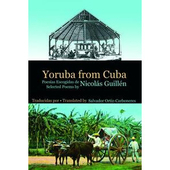Haydee Santamaria: Rebel Lives, Pub. Ocean Press, 2003
This is a small book which belies the magnitude of this woman at the heart of the Cuban revolution – in the struggle against Batista’s brutal dictatorship and also in the building of the new society.
Born into a modest conservative farming family in central Cuba in 1922, Haydee joined the underground revolutionary movement in the early 1950s in Havana with her brother Abel and went on to become in 1959, founder and director of the Casa de las Americas, an intellectual powerhouse for the cultural anti-imperialist left of Cuba and Latin America.
The book is divided into two parts. ‘Fire’ is the story of Haydee’s life in her own words, based on interviews with her published in Cuba in the 1970s; ‘Water’ is a poignant collection of memories of Haydee by her contemporaries, plus letters and poems dedicated to her.
The interviews in ‘Fire’ cover her involvement in the revolutionary struggle particularly in the attack on the Moncada barracks in Santiago de Cuba in 1953 where her brother and fiancé were both tortured and murdered, and she herself was imprisoned along with Melba Hernandez. When Haydee was released, despite her incredibly painful loss she continued to take enormous risks with her life for the struggle, working with Frank Pais in Santiago. She seems to have been a natural at working under cover. She was trusted so much by Fidel Castro she became the only person he could send to Miami to buy weapons and equipment from gangsters to supply the 26 July movement.
Haydée recalls arriving in Santiago de Cuba off the train with two suitcases of weapons, obviously heavy, and an innocent soldier asked her “Do they contain dynamite?” “Books” she said. “I’ve just graduated and I’m going to take advantage of carnival. You’d make a good partner to enjoy myself with at carnival”. The soldier helped her carry them to where her friends were waiting and left.
Throughout her account Haydée reveals a great sense of humour (“lightning laughter” as a colleague later describes) as well as a selfless dedication to the cause. She also gives tribute to the many ordinary citizens who quietly helped her and her comrades escape difficult situations, to avoid being killed.
On forming the Casa de las Americas in 1959, Haydée said what was needed was a means of communication to bring together people from across Latin America and quickly found people to create a magazine to which writers from different countries could “explain what was happening from their point of view”.
The second part of the book, ‘Light’ has letters and poems written for Haydée by her friends and comrades such as Melba Hernandez, Roberto Retamar, Alicia Alonso and Latin American artists who found a home in Casa, such as Ariel Dorfmann from Chile and Mario Benedetti from Uruguay.
In a letter from Che Guevara to Haydée in 1967 he says: “…I see that you have become a ‘literati’ with the power of creation, but I will confess that how I most like you is on that day in the New Year, with all of your fuses blown and firing cannons on all sides…”
Review appeared in CubaSi Autumn 2022 issue c. Cuba Solidarity Campaign
